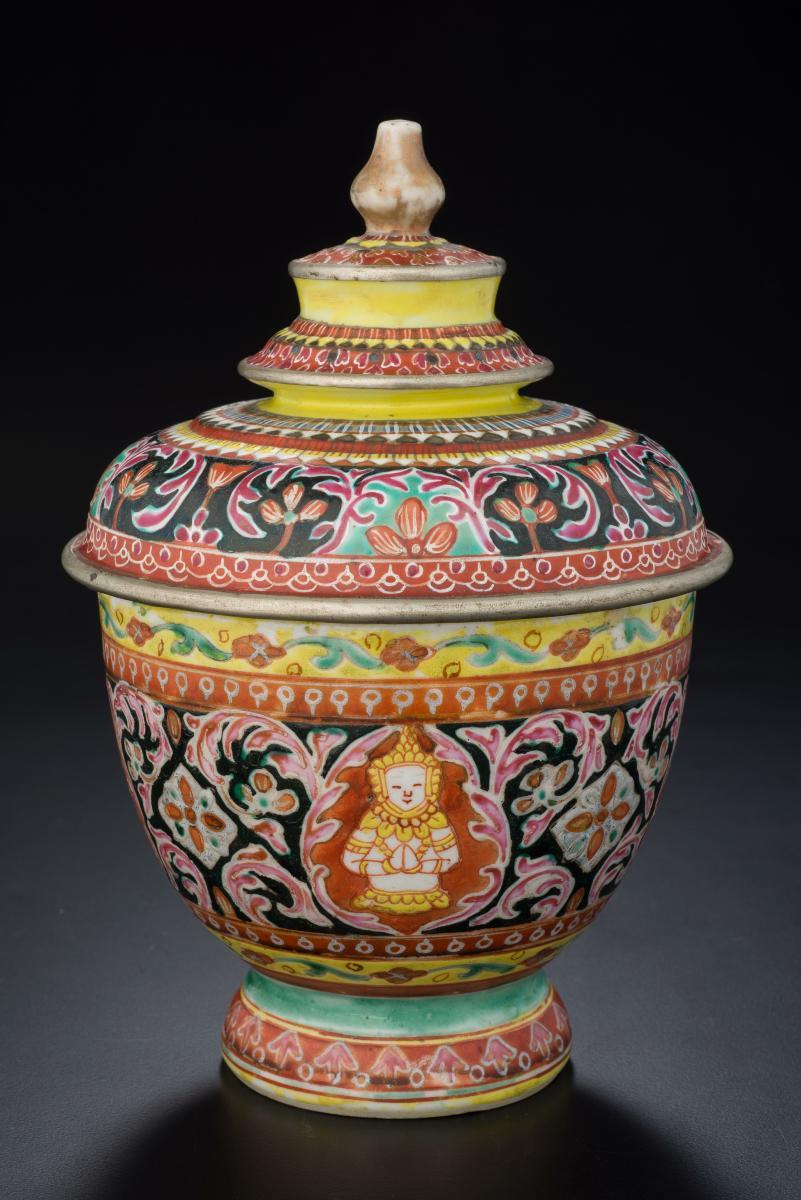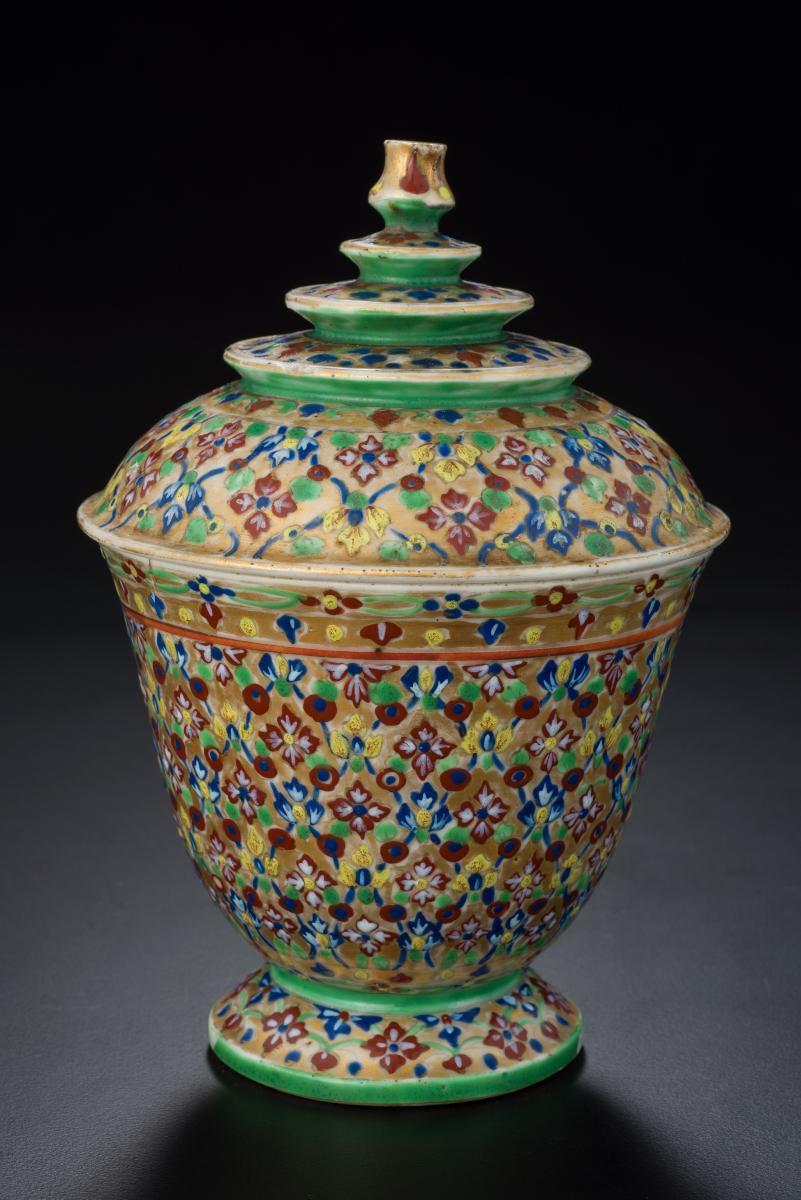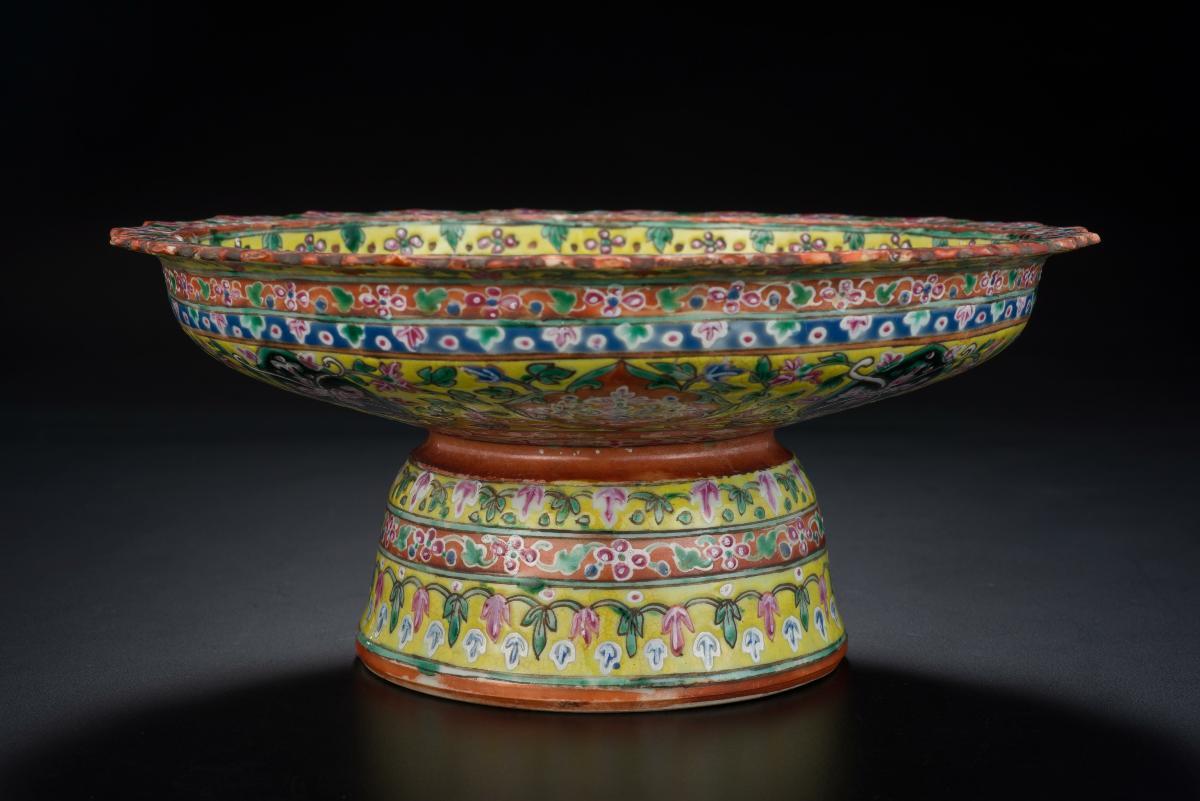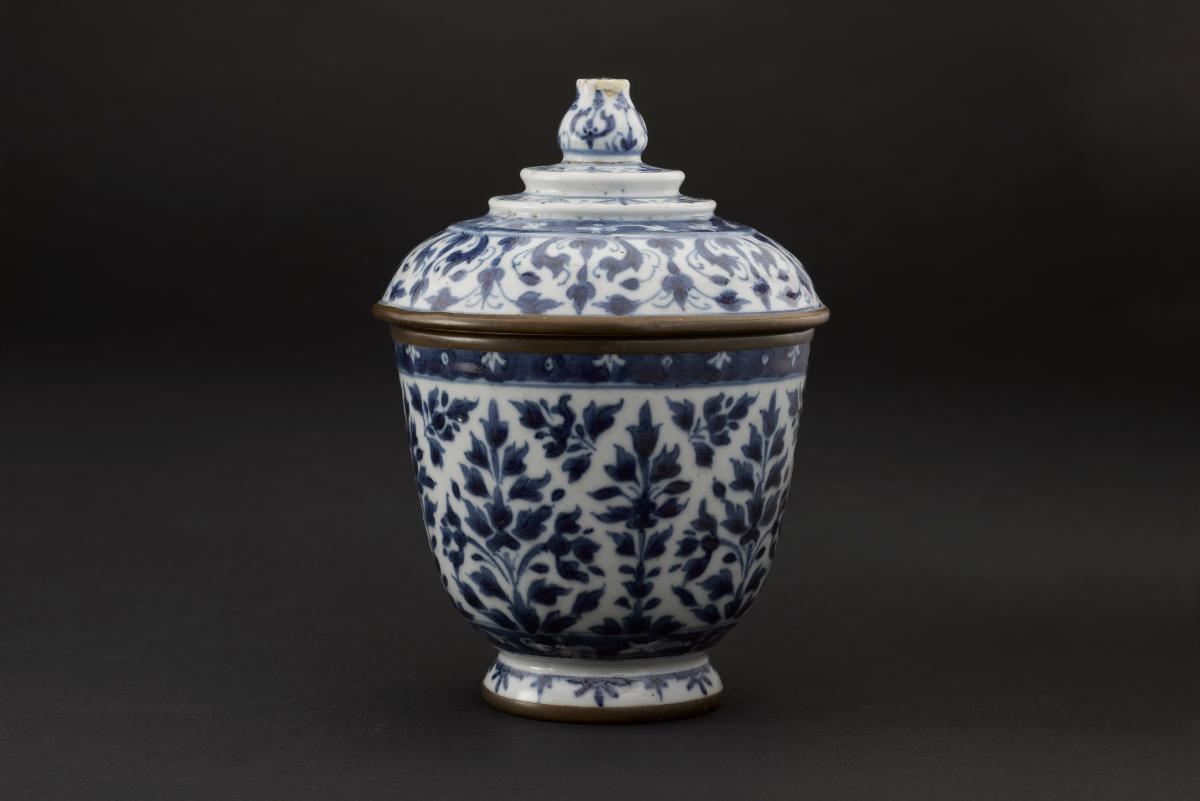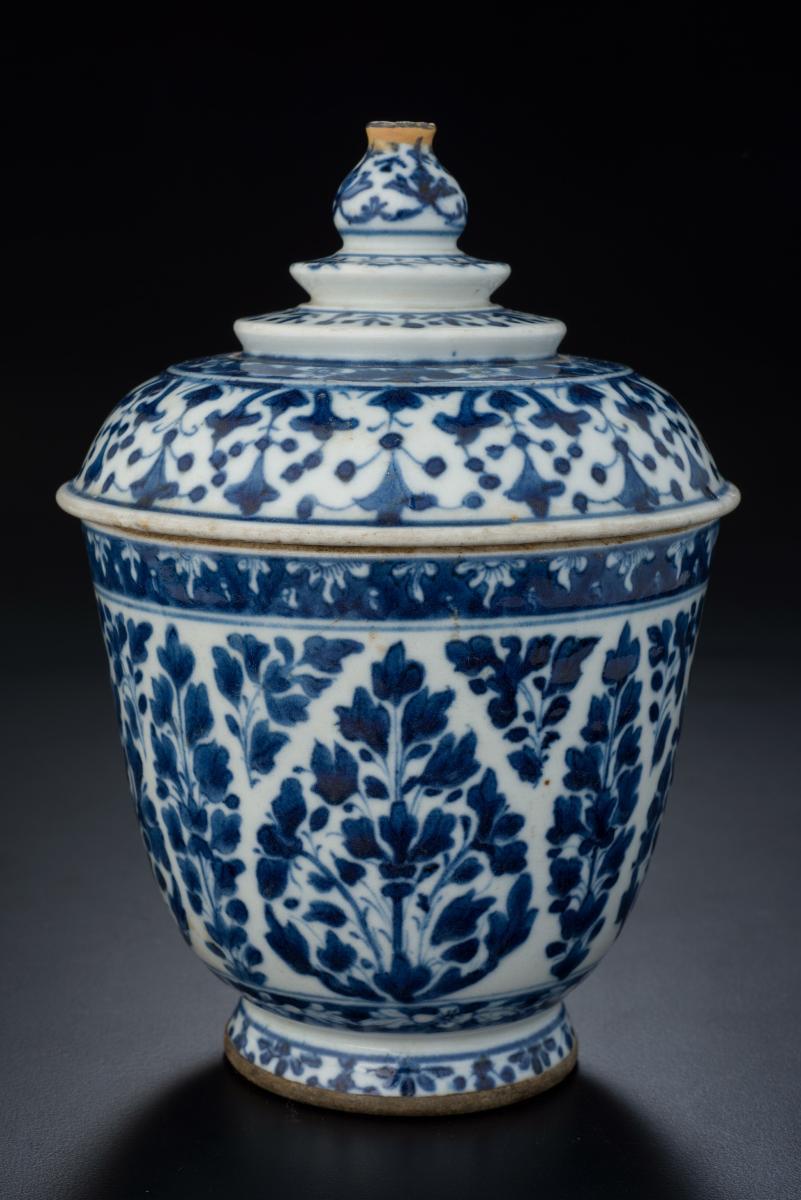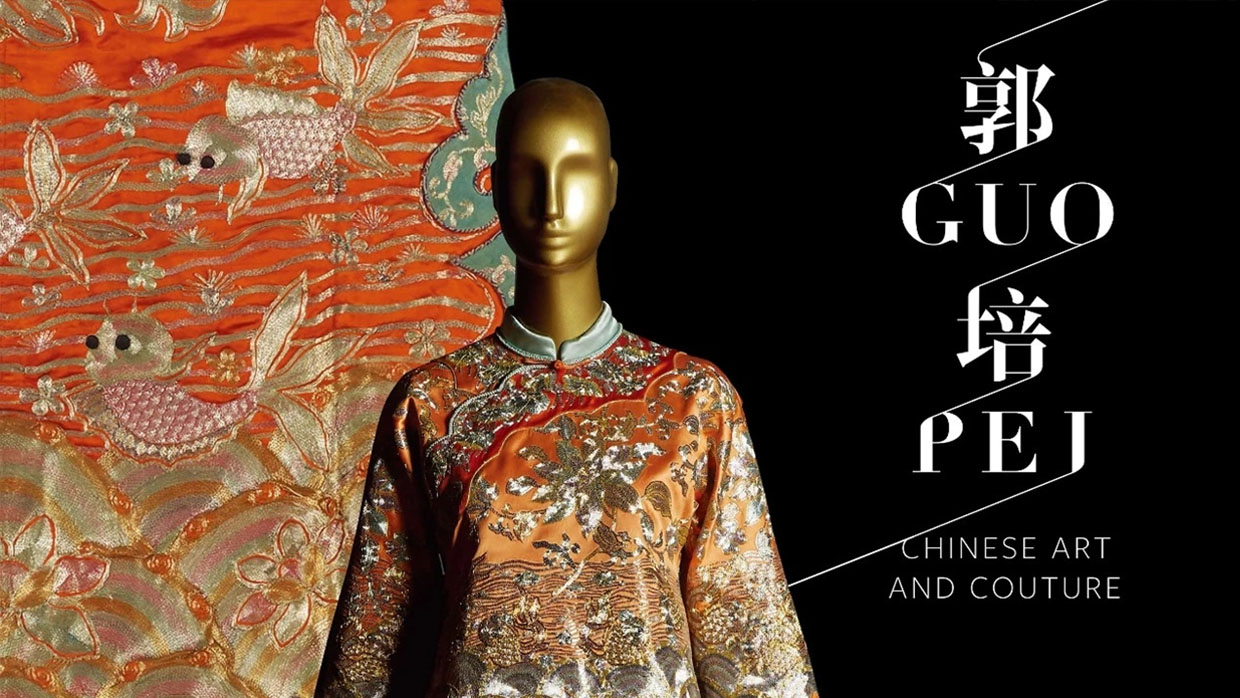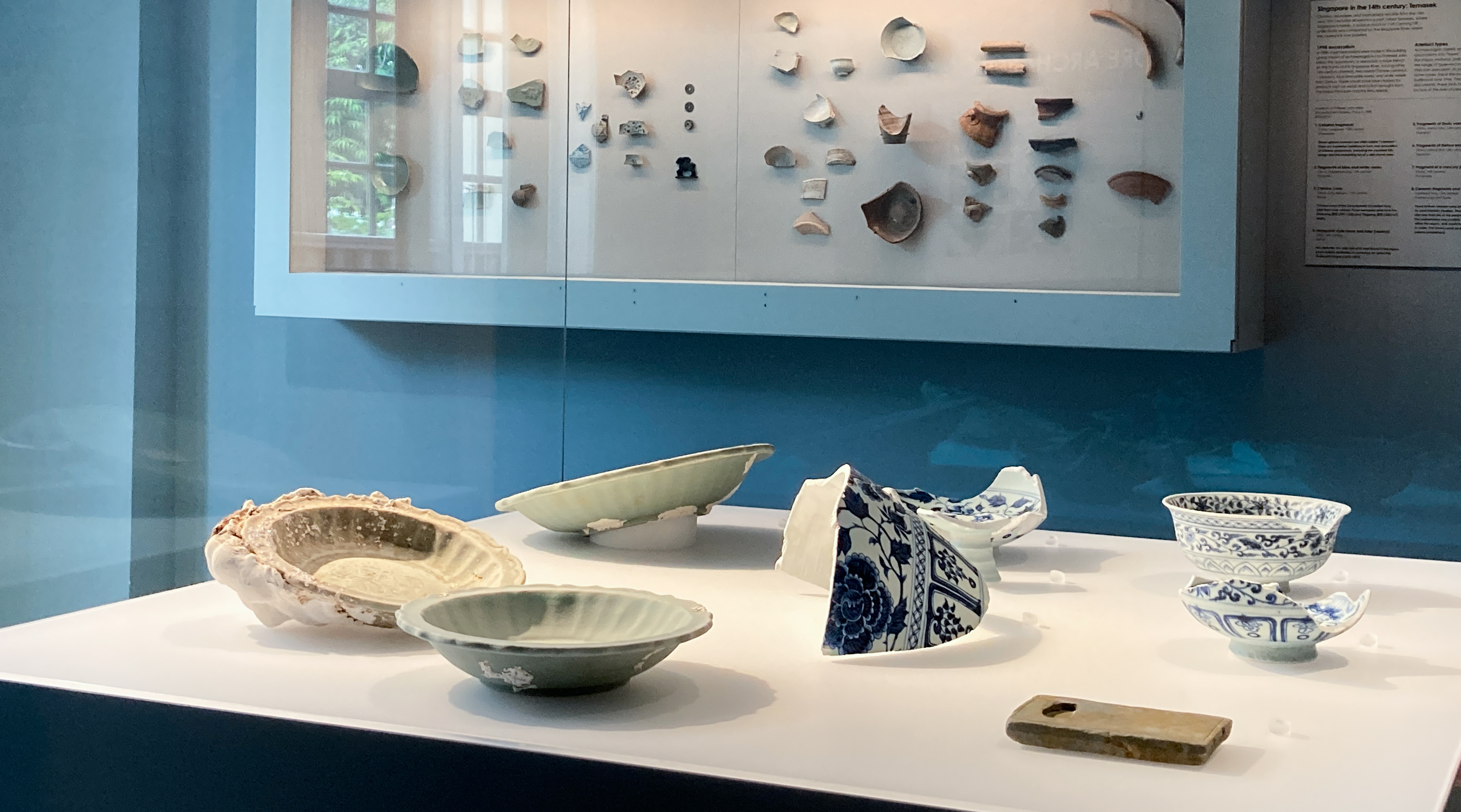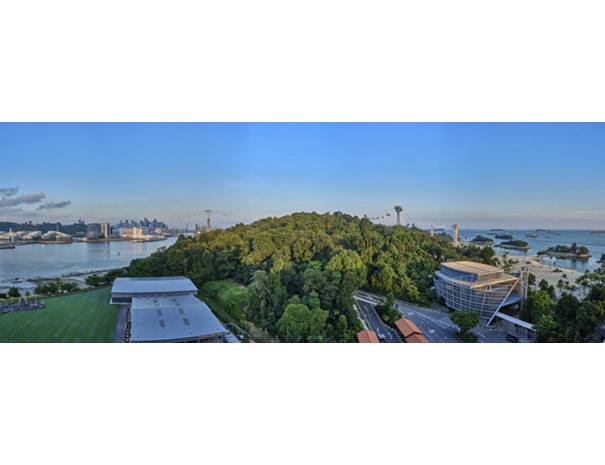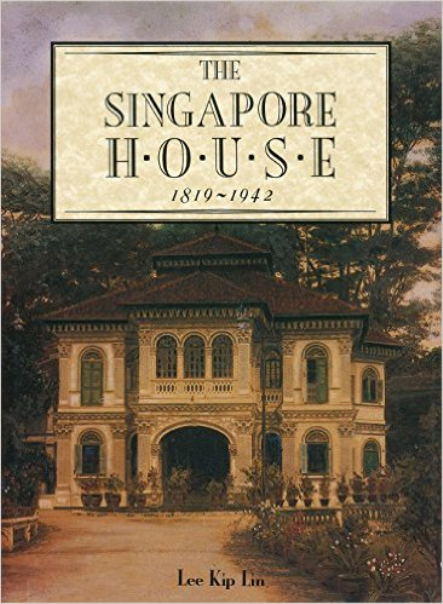The stylistic quality of this pedestal jar is identified as the Tho Song Koth – a covered jar inspired by the grandeur of royal funerary urns of the Bangkok Period (1782- ). Although the form is described as urn-shaped, it was not used as a container for the ashes of the dead, but rather as a container for food. The decoration depicted on the jar bears divine and spiritual subject matter commonly found on Bencharong wares. The kranok, is a flame motifsymbolising the flame of Buddhism. In this case, the kranok is interpreted as a twisting stem, a more complex variant of the kranok. The twisting stem motif is typically painted against a black, green or blue background. In addition, the image of the thep phanom, which features most frequently on Bencharong ware, is present as well. The motif depicts a male deity in “lotus” position, sitting on a ring of lotus petals. The thep phanom’s white torso is visible and it is adorned with a petal-like collar, elaborate jewelry and a heavenly helmet. His hands are held together, fingers pointing upwards in namaskāra, the gesture of adoration. The term thep phanom is therefore a derivation from the Thai pronunciation of Sanskrit devanāma, meaning “adoration by a God”. In addition, the motif is often associated with the Buddha image. To feature the thep phanom therefore reinforces good virtues of Buddhism and is fitting for use by the Thai Royal court and aristocratic class. The pedestal jar is functional in form, in line with the utilitarian purposes of Bencharong wares. Produced in the 19th century for export to Thailand, this was probably produced in Guangzhou or Jingdezhen where workshops crafted objects tailored to the demands of foreign markets. The object is in fine condition with discolouration only on its knob, possibly due to regular use.




